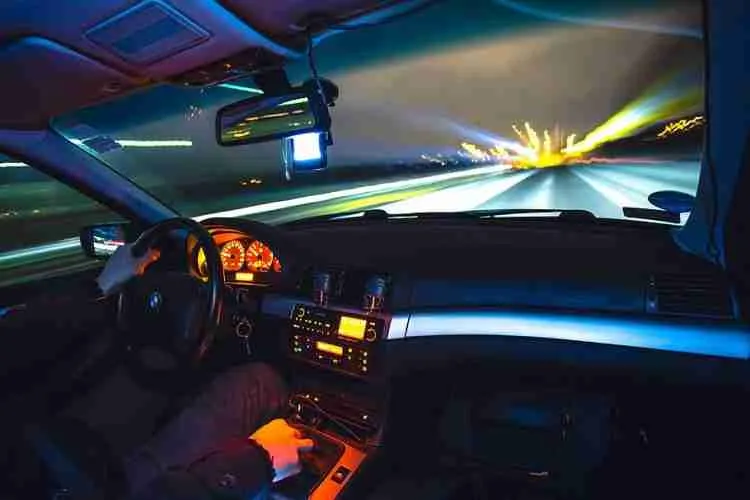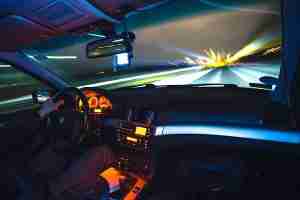Driving With One Eye: Is It Safe?

If you have recently lost an eye, were born without the use of one, or lost vision in one eye through an illness when you were younger and are considering driving, then this article may be of some help.
Driving can be daunting at the best of times and even more so with the use of just one eye. Whether you would like to learn to drive or you have been driving for some time, driving with one eye is perfectly legal.
Read on to find out how you can still drive safely with the use of one eye.
Loss of Vision
Monocular vision can be caused by a variety of reasons such as:
- Cancer of the eye such as intraocular cancer or retinoblastoma
- An infection (i.e. endophthalmitis)
- Disease of the eye such as cataracts or macular degeneration
- Trauma caused by an accident
- Congenital disorders
What Does the Law Say?
It is perfectly legal to drive a non-commercial vehicle in the USA with vision in one eye. Each individual state, along with the District of Columbia, have their own set of standards when granting and renewing driving licenses. Visit the DMV (Department of Motor Vehicles) website to check requirements for a particular state.
Applying for, or renewing a license with vision in one eye, requires an eye exam to check that the individual has good peripheral vision and that they can see a fair distance (around 20 meters). Monocular vision dramatically reduces your horizontal visual field as well as your peripheral vision which can make simple daily tasks seem extremely difficult.
Driving Safely
Driving safely requires individuals to have good vision whether you have vision loss or not. The basic standard requirements are that drivers should have visual acuity of at least 20/40. Individuals must also be able to correctly identify traffic signals and accurately judge distances.
Sometimes, restrictions may be put on your license based on speed, areas and daylight. This may be frustrating, especially if you have been driving for a long time. However, these restrictions are in your best interests and ensure the safety of yourself and any other passengers that may accompany you when travelling by car.
Driving at night

Driving in the dark can be daunting, even for individuals with perfect 20/20 eyesight. The glare from headlights and bright streetlights can often block vision slightly which is not ideal, especially when travelling at speed. Eyeglasses with tinted lenses are helpful in this case and are known to reduce the glare of bright lights.
Depth perception
Monocular vision can often alter the ability to judge depth and distance. People who lose vision in one eye at an early age can judge these distances better as opposed to losing it at an older age as they have had the time to manage the loss and become accustomed to it.
Tips For Staying Safe on the Road
- Keep a good distance between yourself and the car in front.
- Fatigue can kill. If you start to feel tired when driving, take a break. Peripheral vision is hugely affected in individuals suffering from sleep deprivation.
- Be vigilant. There are hazards everywhere, particularly in poor weather conditions.
- Stick to the speed limit.
- Triple check your blind spots, particularly when changing lanes and parking your vehicle.
- Checking your mirrors often will alert you to any changes on the road.
Helpful Driving Devices
Thankfully, there are devices to help visually impaired drivers.
Bioptic telescope

Bioptic telescopes are like mini binoculars and are used to improve distance vision by magnifying it between two and six times. They are attached to regular eyeglasses and can be prescribed for one or both eyes.
Parking/Reversing Sensors
These are helpful when gauging the distance between cars or objects that may be close by when you are parking or reversing.
Large Wing Mirrors
Blind spots can often be harder to judge for individuals with one eye. This is because your nose is often in the way when looking to change lanes or reverse. Having larger wing mirrors helps drivers to see areas that may not be seen with smaller mirrors.
Car Demister
A demister is good for clearing up your windscreen in cold conditions or even in tropical climates where the weather is often wet and humid.
Choosing the Correct Car
Choosing a car that looks good from the outside may not be ideal when it comes to driving it. Smaller cars tend to have smaller rear-view windows which can be harder to see out of, particularly when maneuvering.
Instead, try choosing a vehicle that you feel comfortable driving. Big windows enable you to see more of everything including blind spots and hazards.
Taking a car for a test drive is highly recommended to make sure the requirements for your needs are met. Practice changing lanes, reversing and three-point-turns to make sure you can see confidently from all angles of the car.
Parking Your Car

Parking a vehicle can be challenging, especially if it is a large vehicle.
Reverse and parallel parking requires patience and time. Practice these maneuvers and over time you will find them easier to achieve. Don’t be afraid to ask for help from a passenger or somebody who happens to be walking by, to help guide you into a spot.
To Summarise
Driving with one eye is legal in all 50 states and the District of Columbia.
Learning to drive for the first time with monocular vision may seem difficult, but it is possible. If vision loss occurs when you have been driving for some time, try booking yourself in for refresher lessons with a professional driving instructor.
Seeking help from an occupational therapist when vision has been lost in one eye may be helpful. Visual training activities help individuals to compensate for vision loss. The activities help with eye movement and coordination which are vital when it comes to driving.
Always remember to take your time and drive safely. Choosing a car with large windows is helpful and there are plenty of driving aids on the market to help make your time on the road safer.












No Comment